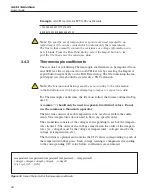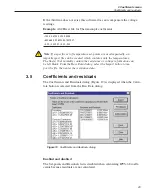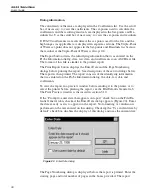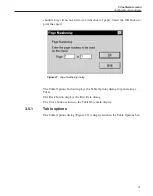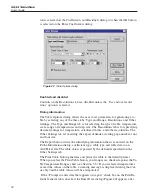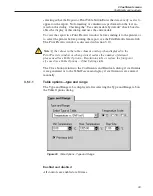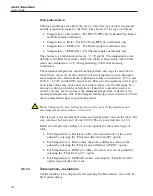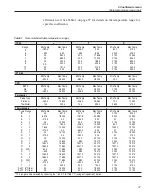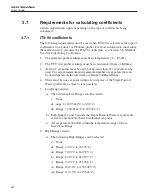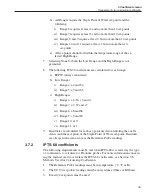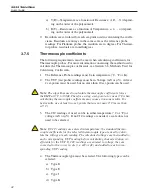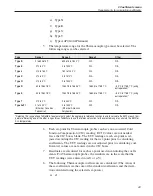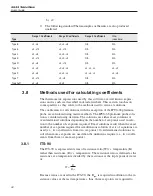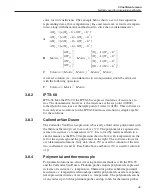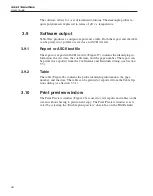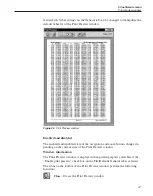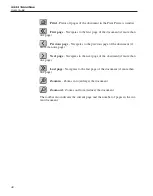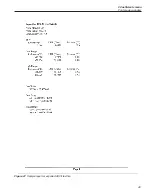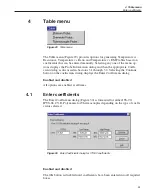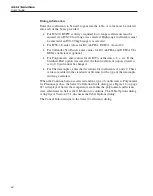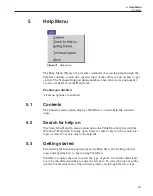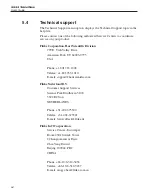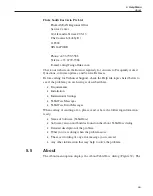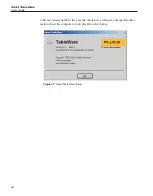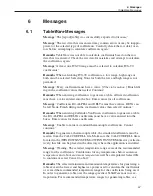
a) T(R)—Temperature as a function of Resistance:
A, B, ... N
(depend-
ing on the order of the polynomial)
b) R(T)—Resistance as a function of Temperature:
a, b, ... n
(depend-
ing on the order of the polynomial)
9.
Residuals are calculated for each set-point used in calculating the coeffi-
cients. Residuals are always in the same scale as the reference probe
readings. For Platinum probes, the residuals are in degrees. For Thermis-
tor probes, residuals are in millidegrees.
3.7.5
Thermocouple coefficients
The following requirements must be met when calculating coefficients for
Thermocouple probes. For more information concerning the method used to
calculate the Thermocouple coefficients, see Section
Methods Used for
Calculating Coefficients.
1.
The Reference Probe readings must be in temperature (°C, °F or K).
2.
The UUT (test probe) readings must be in Voltage (mV or
μ
V). At least
2 set-points must be used, but no more than 10 set-points can be used.
Note:
The algorithm used to calculate thermocouple coefficients forces
the EMF at 0°C to 0.0µV. Therefore, using a set-point at or near 0°C when
calculating thermocouple coefficients may cause erroneous results. For
best results, use at least two set-points that are not near 0°C (more than
±5°C).
3.
The CJC readings, if used, can be in either temperature (°C or °F) or
voltage (mV or
μ
V). If no CJC readings are needed, a scale does not
need to be selected.
Note:
If CJC readings are entered in temperature, the standard thermo-
couple coefficients for the selected thermocouple type are used to calcu-
late the voltage at each reading. The calculated voltages are then added to
each corresponding UUT reading before calculating characterization co-
efficients for the UUT. If CJC readings are entered in voltage, they are
converted to the correct scale (i.e. mV or µV) and added to each corre-
sponding UUT reading
4.
The Thermocouple type must be selected. The following types can be
selected:
a) Type B
b) Type E
c) Type J
d) Type K
9933 TableWare
User’s Guide
42

